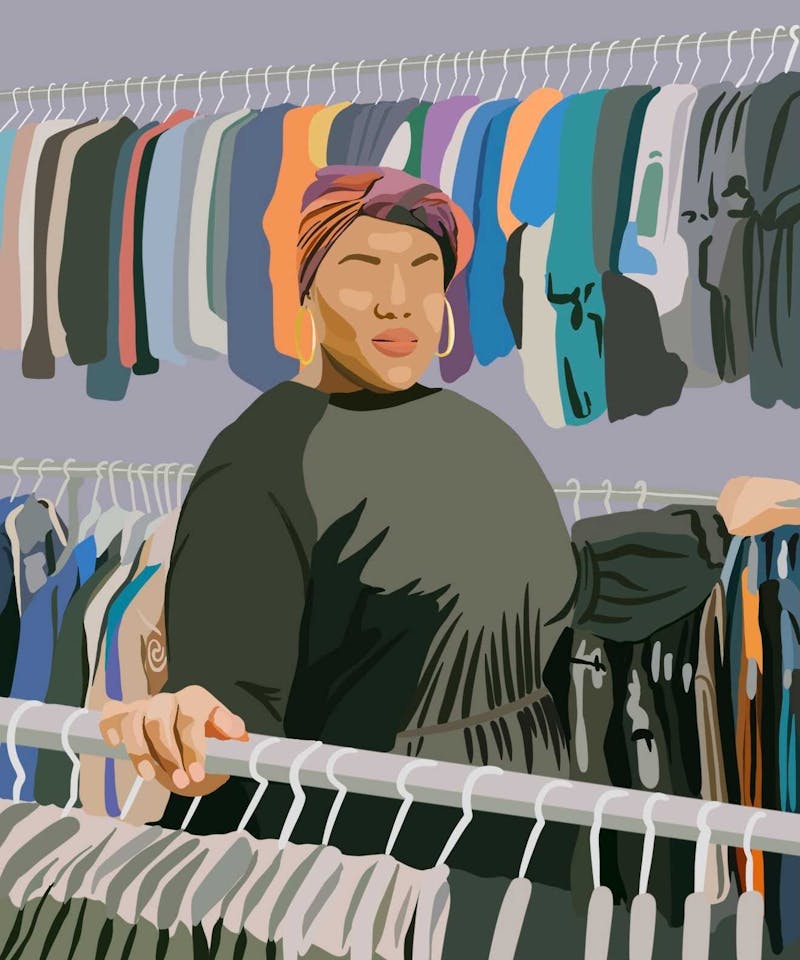

Vintage clothing has made a return and it’s not going away anytime soon. It’s no secret that donning your grandmother’s jewelry or dad’s sweatshirt from the 90’s has been the epitome of style for the past few years. College students are no longer flocking to department stores, but instead making trips to thrift stores for their newest items. Even better, shopping at thrift stores is not only trendy, but also far more affordable than most retail stores. A tank top I thrifted for $6 was both a “steal” and awarded me fashion credibility among my peers because I could label it “vintage.”
So, what is not to love?
The problem in thrifting lies within the demographic makeup of those who have adopted this trend. Organizations such as Goodwill and The Salvation Army were designed as outlets to provide low-priced goods to those who genuinely could not afford first-hand clothing.
However, as an influx of middle class and upper-middle class teenagers and young adults flock to thrift stores, prices inflate based on increased demand, thus excluding those who have traditionally shopped at thrift stores based on necessity.
I will be the first to admit that I have engaged in negative thrifting behavior and decided it was important to identify the do’s and don'ts of buying second-hand clothes. I interviewed Kate Lichtman, a first year student at the University of Wisconsin-Madison from New Rochelle, NY. Kate is studying Retail and Consumer Behavior and working towards a certificate in Date Science, on top of being my go-to person on all things fashion.
Kate told me that she has decided to stop shopping at popular thrifting locations such as the Salvation Army and Goodwill in order to avoid exploiting resources for low-income families in her community. She noted that “no pair of Levi’s is worth one less pair of pants for a young woman who really needs it.” I find her outlook extremely compelling; the allure of cheap designer finds should not serve as a justification for the exploitation of goods meant for those as a means of survival.
While shopping at stores such as Goodwill and Salvation Army is an activity that middle-class and upper-middle class shoppers should avoid, the thrifting boom has allowed for the proliferation of “trendy” second hand clothing stores that are significantly less harmful to lower-income families. Kate acknowledged that because she is privileged enough to do so, she prefers to do any in-person thrifting at consignment shops or ‘trendy’ thrift shops that she knows are meant to cater more specifically to the New York street-style scene. She notes that the shoppers at these stores are fortunate enough to be shopping for pleasure and not necessity.
However, a pledge to abandon “conventional” thrift shopping doesn’t mean you can’t get your second-hand clothing fix at all. While I have not used Depop before, Kate raves about the peer-to-peer social shopping app.
“No one wants to hear me say ‘Depop’ AGAIN, but I truly could not have more positive things to say about it. I can confidently say that 9/10 of the items of clothing/shoes/accessories I see on the market that I’d normally purchase firsthand can be found on Depop secondhand (and in immaculate condition),” Kate said. “Aside from its high sustainability, Depop is a private e-commerce platform, which does wonders in mitigating upper class exploitation of community resources.”
Kate aptly points out that Depop is a plausible way for those with high incomes to get their thrift “fixings” without hurting those who truly benefit from establishments like Goodwill and Salvation Army. When I asked her how Depop could lessen the costs of nonessential thrifting, she responded with a unique perspective:
“Depop being an e-commerce platform and not a brick and mortar establishment limits accessibility in some ways, but I look at it as almost creating a separate secondhand world that releases low-income families of any strain on their resources.”
Ultimately, I leave with the belief that buying second-hand clothes is a sustainable practice that should be valued in the fashion industry. However, it is an individual’s responsibility to ensure that their thrifting practices are ethical and do not inadvertently jeopardize someone else’s access to a basic survival need.